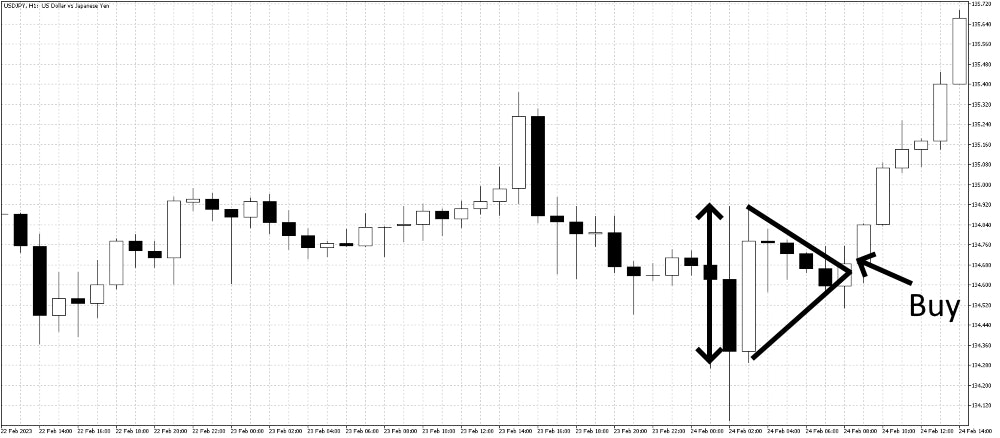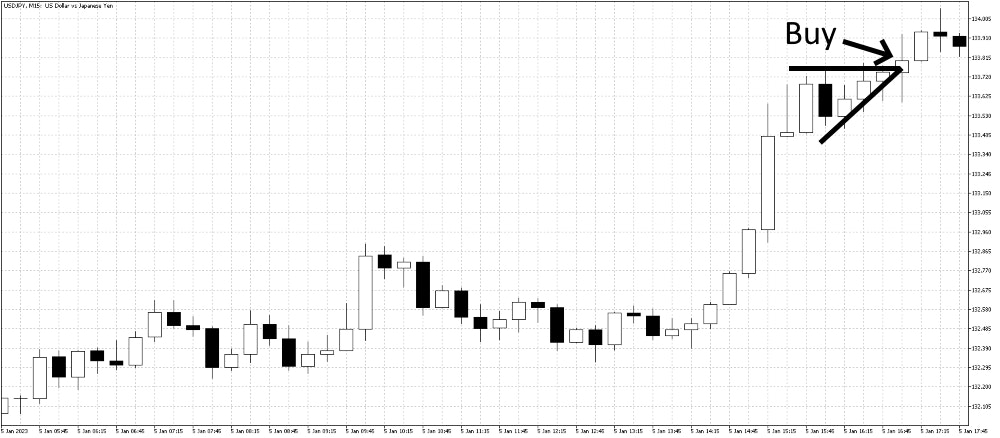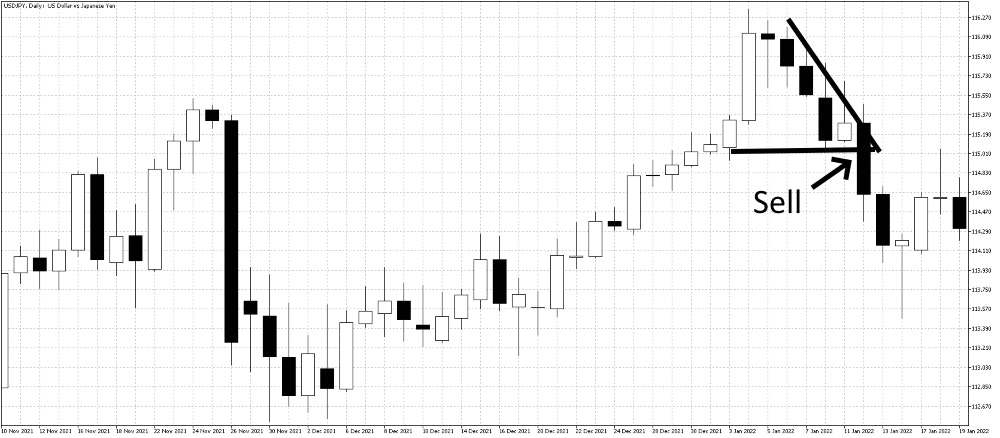Nick Goold
The triangle pattern is a common technical analysis pattern that occurs when the price action of a financial market consolidates into a tighter and tighter range, creating a pattern that resembles a triangle. An essential technical analysis pattern that can lead to profitable trading opportunities when the market quietens.
There are three types of triangle patterns:
Symmetrical Triangle

This pattern occurs when the price action creates a series of higher lows and lower highs, eventually converging to a single point. This pattern suggests that a breakout is imminent, but the direction of the breakout is not clear.
Ascending Triangle

This pattern occurs when the price action creates a horizontal resistance level and a series of higher lows. This pattern suggests that the price will likely break out to the upside. While the market is more likely to rise above resistance in this pattern, breaking the upward trendline can signal a fall.
Descending Triangle

This pattern occurs when the price action creates a horizontal support level and a series of lower highs. This pattern suggests that the price is likelier to break out to the downside. A rise above the downward trendline is rare but can signal a price rise.
To trade the triangle pattern, traders typically look for a breakout in the direction of the pattern. Traders usually place a buy or sell order just above or below the triangle, depending on the breakout direction. While the first breakout is usually the most often seen, the reverse breakout can also lead to profitable trading opportunities.
Wait for confirmation?
Some traders believe waiting for confirmation of the breakout is essential, which occurs when the price moves outside the triangle pattern and stays outside for some time. Waiting for confirmation is usually best for swing traders looking to hold a long-term position. While day traders are more likely to enter without waiting for confirmation as they could miss a trading opportunity. Traders can also use technical indicators such as volume and momentum indicators to confirm the breakout direction. Waiting for confirmation can increase traders' win rate but lower their risk-reward ratio, so it is a personal decision.
Triangle pattern risk management
Stop loss
It is also essential to use proper risk management techniques, such as stop loss orders, to limit potential losses in case the breakout fails. The triangle pattern is a trend trade, so the entry is usually profitable quickly when successful. Should prices reverse and move back within the triangle pattern, exiting your position quickly is vital. Exiting with a small loss allows you the re-enter the position should the market move outside the triangle again.
Profit target
A popular method to set a profit target is to calculate the largest range of the triangle and use the number of pips as the target. For instance, in a descending triangle, calculate the difference between the highest and lowest point and add it to the entry point. So if the high was 125.50, the low was 125.00, and your entry point was 125.10, your target would be 125.60. While this method is popular, considering support and resistance can also help you place a target.
The triangle pattern can lead to powerful moves, so only exit your long position if the market stops at resistance or your short position if the market stops at support. The use of a trailing stop is popular with this pattern.
Triangle pattern psychology
The triangle pattern can lead to significant profits, but it is a pattern that takes a high level of patience to trade. The triangle can take a long time to form, so when the trading opportunity finally comes, it is easy to get excited and enter too early. Instead, be patient for prices to move above or below the triangle before you enter a position.
This pattern can have a low win ratio of 50% or lower but can lead to significant profits. So exit your losses quickly, and when the market moves in your direction, be confident and wait for your target to be touched.

